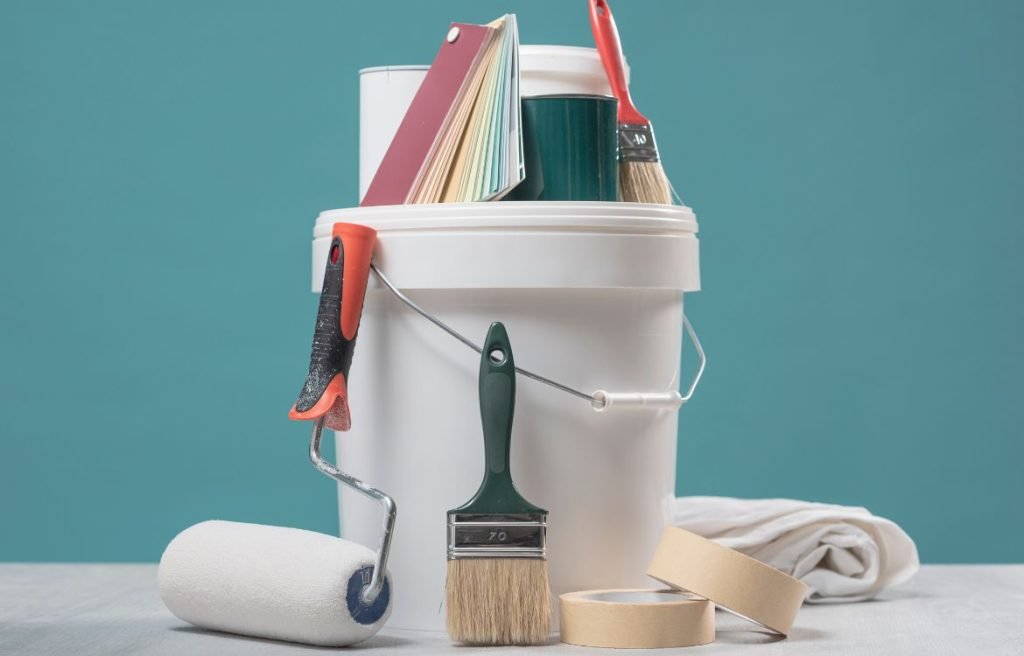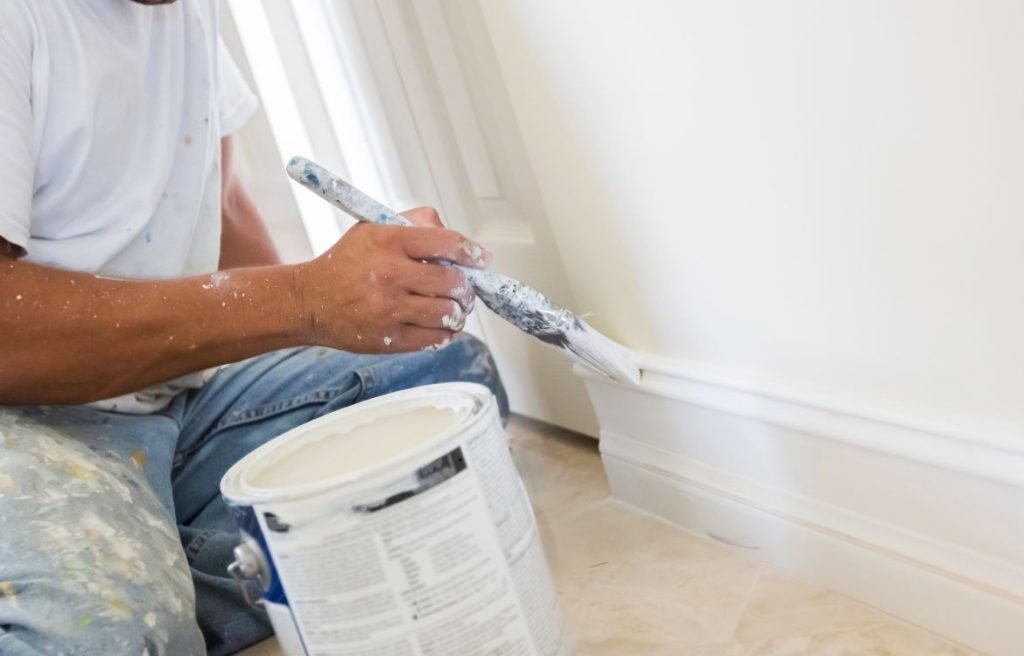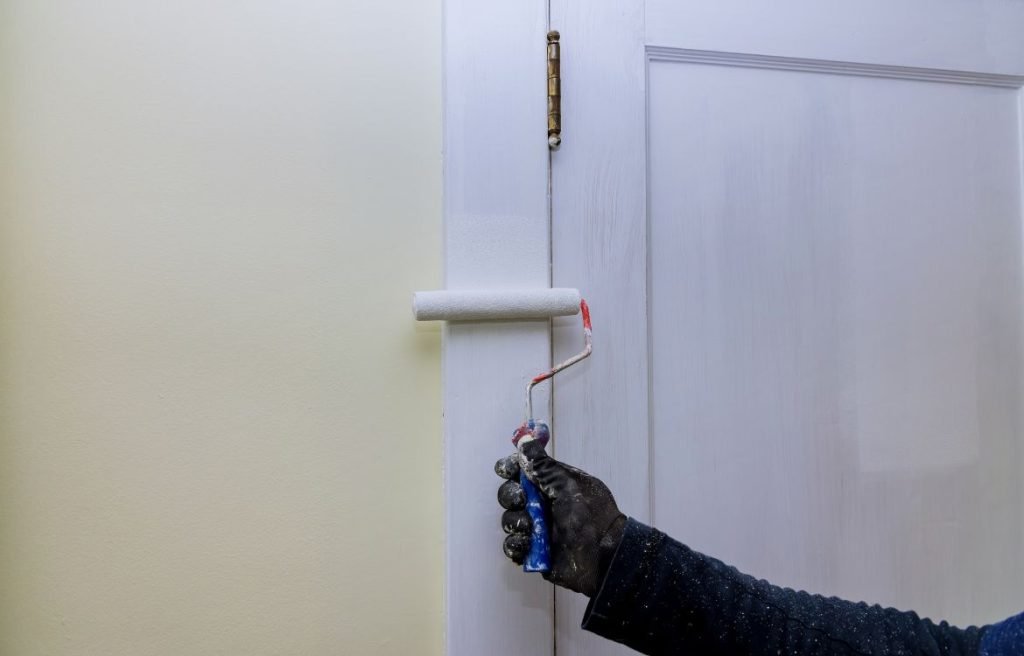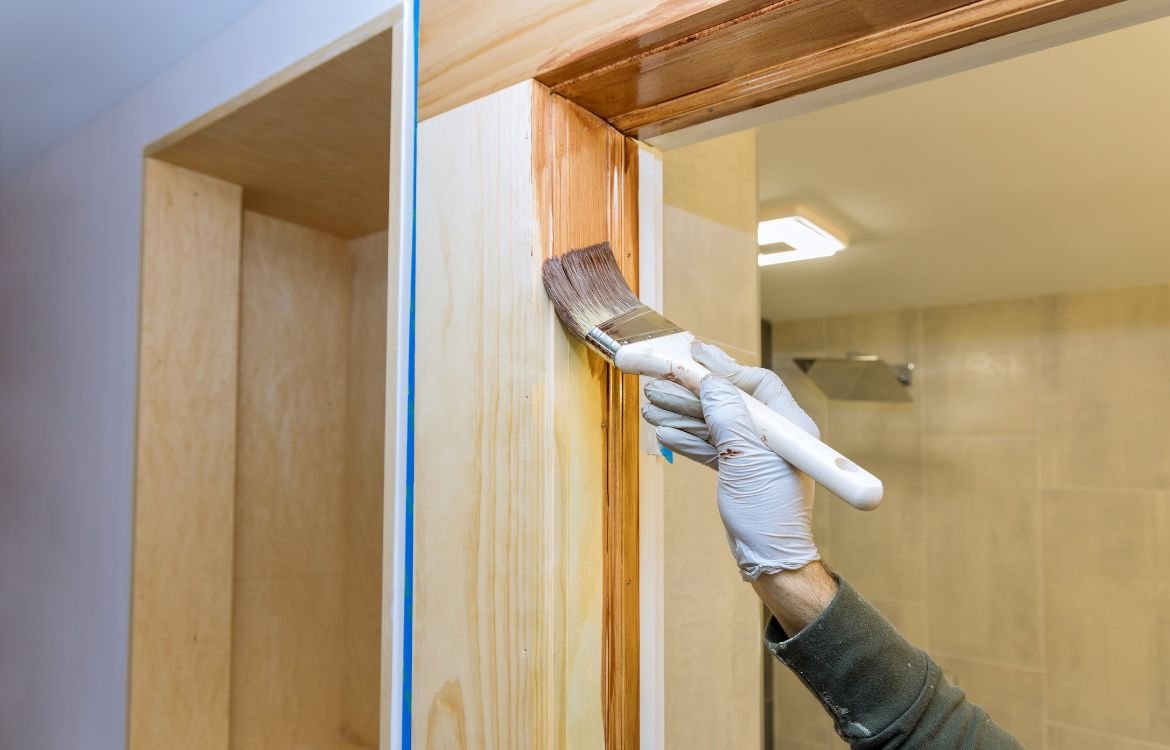Importance of Priming Interior Surfaces before Painting
Are you about to embark on a painting project for your beloved home? Are you searching for valuable information on how to achieve flawless results? Look no further! Welcome to our comprehensive guide on the importance of priming interior surfaces before painting. If you’ve been wondering about the crucial steps to ensure a professional finish, you’re in the right place.
In this article, we’ll delve into the depths of surface preparation, uncovering its efficiency and effectiveness in transforming your walls. Get ready to discover the secrets that will elevate your painting game and help you achieve the stunning results you’ve always dreamed of. So, let’s dive in and explore the world of priming interior surfaces before painting.
What is a Primer?
When it comes to painting your interior surfaces, a primer plays a vital role in achieving a flawless finish. But what exactly is a primer? In simple terms, a primer is a preparatory coating that is applied to the surface before painting. It acts as a foundation, creating a smooth and uniform base for the paint to adhere to. Think of it as a primer for your makeup – it helps your foundation go on smoothly and stay in place.

How Does a Primer Work?
Now that we know what a primer is, let’s explore how it works its magic. Primers are formulated with special ingredients that allow them to bond tightly with the surface. This bond creates a strong foundation that helps the paint adhere better and prevents it from peeling or chipping over time. Additionally, primers have a porous nature that enables them to fill in small cracks, imperfections, and porous surfaces, ensuring a smoother and more even application of the paint.
Types of Primers and Their Uses
Not all primers are created equal, as different surfaces and painting projects may require specific types of primers. Let’s take a closer look at some common types of primers and their uses:
- Stain-blocking primers: These primers are designed to cover and seal stains, such as water stains, smoke damage, or dark-colored surfaces. They prevent the stains from bleeding through the paint and maintain a clean, uniform appearance.
- Bonding primers: If you’re painting a slick or glossy surface, like glass or ceramic tiles, a bonding primer is your go-to choice. It creates a strong bond between the surface and the paint, ensuring excellent adhesion.
- Drywall primers: When working with new drywall or repairing damaged walls, a drywall primer is essential. It helps seal the porous surface, reduces the absorption of paint, and promotes a smooth and even finish.
- Multi-surface primers: As the name suggests, these versatile primers are suitable for various surfaces, including wood, metal, and masonry. They provide excellent adhesion and ensure consistent results across different materials.

The Importance of Priming Before Painting
Ensuring Proper Adhesion of Paint
One of the primary reasons for using a primer is to ensure proper adhesion of the paint to the surface. Without a primer, the paint may struggle to adhere evenly, resulting in a patchy and uneven finish. The primer creates a bond between the surface and the paint, allowing it to grip firmly and providing a solid foundation for long-lasting results.
Enhancing Paint Durability
Priming not only improves the adhesion of paint but also enhances its durability. By creating a barrier between the surface and the paint, the primer helps protect the underlying material from moisture, stains, and other damaging factors. This added layer of protection ensures that your paint job stands the test of time, maintaining its beauty and integrity.
Providing Additional Protection to the Surface
Certain surfaces, such as wood or drywall, are more susceptible to moisture and environmental factors. Priming these surfaces before painting adds an extra layer of protection, preventing moisture penetration, mold growth, and potential damage. It acts as a shield, safeguarding your surfaces and prolonging their lifespan.
Improving the Appearance of the Paint Job
Lastly, priming plays a crucial role in enhancing the overall appearance of your paint job. It helps create a smooth and uniform surface by filling in imperfections, hiding blemishes, and providing an even base for the paint to be applied. This results in a more professional-looking finish with vibrant, consistent colors and a refined texture.
Debunking the Myth of Self-Priming Paints
What are Self-Priming Paints?
In recent years, self-priming paints have gained popularity for their convenience and time-saving properties. These paints claim to eliminate the need for a separate primer coat, promising to provide both the primer and paint in one product. However, let’s take a closer look at what self-priming paints truly are and whether they live up to the hype.
Self-priming paints are formulated with high levels of resins and pigments, allowing them to create a thick, opaque coverage. They are designed to adhere to various surfaces, even those that have not been primed beforehand. The idea behind self-priming paints is to provide a convenient solution for homeowners who want to skip the priming step and save time and effort.
Limitations of Self-Priming Paints
While self-priming paints may seem like a dream come true, it’s important to understand their limitations. First and foremost, self-priming paints work best on surfaces that are in good condition, without significant imperfections or stains. They are less effective in concealing stains, dark colors, or glossy surfaces, which may still require proper priming for optimal results.
Additionally, self-priming paints may not provide the same level of adhesion and durability as a dedicated primer. For surfaces that are prone to moisture, such as bathrooms or kitchens, or for areas with high traffic, using a separate primer can offer enhanced protection and longevity.
When to Use Self-Priming Paints
Despite their limitations, there are situations where self-priming paints can be suitable. If you’re working with a surface that is already smooth, clean, and in good condition, self-priming paints can provide a convenient and time-saving option. They can be effective for touch-ups, small projects, or areas where the surface preparation is minimal.
However, it’s crucial to assess the specific requirements of your painting project and determine whether self-priming paints are the best choice. In many cases, especially when dealing with challenging surfaces or specific painting conditions, using a dedicated primer is still recommended for optimal results.

Situations Where Priming is Crucial
While self-priming paints may have their place, there are several situations where priming is crucial for achieving the best possible outcome. Let’s explore some scenarios where using a separate primer is highly recommended:
Painting Over Dark Colors
When transitioning from a dark-colored surface to a lighter shade, priming becomes essential. Dark colors have a high concentration of pigments, which can affect the final appearance of the lighter paint. A primer helps block the underlying color, ensuring that the new paint achieves its true hue and prevents any color bleed-through.
Painting Over Stains
Stains, such as water damage or smoke residue, can be persistent and may show through the paint if not properly sealed. A stain-blocking primer is specifically designed to prevent these stains from resurfacing and spoiling your paint job. By sealing the stains, priming ensures a fresh, clean surface for the new paint to adhere to.
Painting New Drywall
Newly installed drywall surfaces are highly porous, absorbing paint at different rates and leading to an uneven finish. Priming the drywall helps seal the porous surface, promoting uniform absorption of the paint and preventing patchiness. It also aids in reducing the number of paint coats required for full coverage.
Painting Over Glossy Surfaces
Glossy or semi-glossy surfaces, such as previously painted trim or cabinets, can pose adhesion challenges for the new paint. Without proper priming, the paint may struggle to adhere effectively, resulting in peeling or flaking over time. Using a bonding primer ensures a strong bond between the surface and the paint, promoting long-lasting durability.
Painting Over Metal Surfaces
Metal surfaces, including doors, railings, or furniture, often require priming before painting. Primers specifically formulated for metal surfaces help prevent rust formation, enhance adhesion, and provide a protective layer against the elements. They create a stable foundation for the paint, ensuring a smooth and long-lasting finish.
How to Choose the Right Primer
Factors to Consider When Choosing a Primer
Choosing the right primer for your painting project is crucial to ensure optimal results. Here are some important factors to consider when making your selection:
- Surface Type: Different surfaces require different types of primers. Consider whether you’re working with drywall, wood, metal, or other materials, as each may have specific primer needs.
- Surface Condition: Assess the condition of the surface. If it’s smooth and in good shape, a standard primer may suffice. For surfaces with stains, discoloration, or damage, consider specialized primers like stain-blocking or high-adhesion primers.
- Paint Type: Consider the type of paint you’ll be using. Some primers are specifically formulated to work well with certain paint types, such as oil-based or latex paints. Check the product labels for compatibility information.
- Environmental Factors: Take into account the environmental conditions the painted surface will be exposed to. For high-moisture areas like bathrooms or kitchens, choose a primer with moisture-resistant properties.
- Project Size: Consider the size of your project. For larger projects, you may prefer a primer that offers good coverage and is easy to apply.
Different Types of Primers for Different Surfaces
- Water-based Primers: These versatile primers are suitable for a wide range of surfaces, including drywall, wood, and previously painted surfaces. They are easy to clean up, have low odor, and dry relatively quickly.
- Oil-based Primers: Oil-based primers provide excellent adhesion and are ideal for surfaces prone to stains, such as wood or metal. They offer superior blocking properties and are effective in sealing in odors or tannins.
- Shellac-based Primers: Shellac primers excel at blocking tough stains, such as water damage or smoke residue. They dry quickly and provide an excellent barrier between the stain and the topcoat.
- Bonding Primers: These primers are designed to enhance adhesion on challenging surfaces like glossy or slick materials, such as glass or tile. They help the paint bond securely to the surface, preventing peeling or flaking.
How to Apply Primer
Preparing the Surface
Before applying the primer, ensure that the surface is clean, dry, and free of any dust, grease, or loose particles. Remove any flaking paint or rough patches and fill in any cracks or holes with a suitable filler. Sand the surface lightly to promote adhesion and create a smooth substrate for the primer.
Applying the Primer
- Stir the Primer: Thoroughly mix the primer using a stirring stick to ensure even distribution of pigments and additives.
- Use the Right Tools: Choose the appropriate tools for application, such as a brush, roller, or sprayer, based on the surface and the size of the area. Follow the manufacturer’s recommendations for the specific primer you’re using.
- Apply in Thin, Even Coats: Apply the primer in thin, even coats, working in small sections. Start from the top and work your way down, using smooth and consistent strokes. Avoid over-applying the primer, as it may lead to drips or uneven drying.
Drying and Sanding the Primed Surface
Allow the primer to dry completely according to the manufacturer’s instructions. Typically, it takes about 1-2 hours, but it’s best to refer to the product label for specific drying times. Once dry, lightly sand the primed surface using fine-grit sandpaper to create a smooth finish and remove any imperfections. Wipe away any sanding residue before proceeding with the paint application.
FAQ
Do I need to prime before painting interior?
In most cases, it is recommended to prime before painting interior surfaces. Primer creates a smooth and uniform surface, helps the paint adhere better, and provides better coverage. It also helps to seal porous surfaces, block stains, and improve the durability and longevity of the paint job.
Why is it important to prime interior surfaces?
Priming interior surfaces is important for several reasons: – It helps to create a smooth and even surface for the paint. – Primer improves paint adhesion and helps the paint bond to the surface. – It provides a consistent base color, enhancing the appearance of the final paint color. – Primer seals the surface, preventing stains, moisture, and other substances from affecting the paint job. – It improves the durability and longevity of the paint, reducing the chances of peeling, cracking, or fading over time.
Why is priming important before painting?
Priming is important before painting for several reasons: – It helps to create a smooth and uniform surface by filling in imperfections. – Primer improves paint adhesion, allowing the paint to stick better to the surface. – It helps the paint to cover evenly and reduces the number of coats required. – Primer seals the surface, preventing stains, odors, and moisture from seeping through the paint. – It improves the durability and longevity of the paint job, making it more resistant to wear and tear.
What is the significance of priming?
Priming plays a significant role in the painting process: – It prepares the surface for paint by creating a suitable base. – Primer helps to improve paint adhesion and promotes better coverage. – It seals the surface, preventing stains, odors, and moisture from affecting the paint. – Primer enhances the overall appearance and longevity of the paint job. – It provides a consistent base color, ensuring the true color of the paint is achieved. – Priming is especially important for porous surfaces, new substrates, and areas with stains or discoloration.
Why is priming so important?
Priming is essential for several reasons: – It creates a proper surface for paint application, ensuring better adhesion and a smoother finish. – Primer helps to block stains, tannins, and other substances that can affect the appearance of the paint. – It promotes paint durability, preventing peeling, cracking, or flaking over time. – Primer enhances the coverage of the paint, reducing the number of coats required. – It provides a consistent base color, allowing the true color of the paint to shine. – Priming helps to seal porous surfaces and prevents moisture penetration, reducing the risk of damage or mold growth.
Conclusion
We would like to express our heartfelt gratitude to you for taking the time to read our blog post on the importance of priming interior surfaces before painting. We hope you found the information provided both enlightening and inspiring. Remember, at Horizon Painting, we’re always here to assist you in your home improvement journey. If you have any further questions or need expert advice, don’t hesitate to contact us. Let our skilled professionals guide you towards achieving the beautiful, long-lasting results your home deserves. Reach out to us at Horizon Painting today and let’s transform your space into a work of art.
